After Jesus’ birth came a dramatic journey through a hostile wilderness. As Dan Morrice follows in Christ’s footsteps he considers how the lessons Jesus learned in the Negev desert shaped the man he became
As the sun rose over the mountains of Jordan, the vast sands of Egypt appeared in the west. I paused for a moment on the shores of the Red Sea and waved goodbye to civilisation. The dark ridges of Israel’s Negev desert stretched into the horizon and I prepared to enter a landscape that looked like Mars.
Staring out into the unknown on that first day, I was gripped by fear. Though I didn’t know it at the time, in the desert trials that lay ahead I would encounter an unparalleled beauty, not just in the tapestry of stars that lit up the night sky, but in the hearts of strangers who saved me in my hour of need.
STEPPING INTO THE STORY
Just over 2,000 years ago, a refugee child made a similar journey on the way home from exile in Egypt to his family home in the village of Nazareth. That boy was, seemingly, a nobody back then. Yeshua was his name – common at the time – an innocent child in a cruel world; a refugee forced from his home by a paranoid puppet king, unknown by the military superpower that would nail him to a tree in his 30s. Yet that superpower would eventually collapse, as they all ultimately do, while the child grew up to change history, more than any human being who has ever lived.
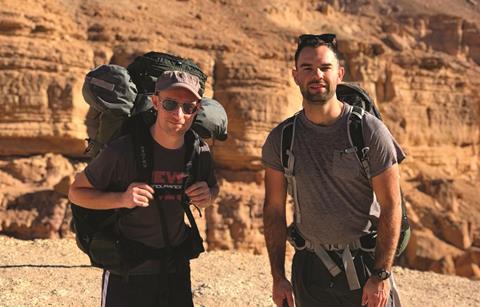
Has anyone so influential ever started life so vulnerable? On that scorching morning, on the edge of Egypt, I tasted a small drop of that vulnerability. As a travel writer and a follower of Jesus, I’m always looking for ways to bridge the gap between the stories in scripture and the experiences of this generation. What better way to step into the Christmas story than to literally step into the Christmas story?
Jesus’ teaching is littered with stories of precisely the sort of hospitality I encountered in the desert
One of the oft-forgotten details of Jesus’ life is that his earliest memories would not have been as a baby in Bethlehem but as a refugee in Africa. At the age when most children would be starting school, Jesus would have walked hundreds of miles through a savage wilderness with his parents in search of home.
How did he survive? How would I survive? The time had come to find out.
As soon as the sun appeared over Jordan, it became unbearably hot. While my thick leather walking boots were perfect for a wet Scottish mountain, I soon realised that they were objects of torture in the desert. My pack was more than double the recommended weight and within an hour the mesh straps had bitten a red honeycomb pattern into my hips.
I looked up into the looming red mountains. It felt like the Negev was mocking me, belly laughing from its giant creases at the audacious Brit who thought he could defy the Martian wilderness while dressed like a muppet on a geography field trip.
I stopped for one last coffee in an isolated roadside shop before leaving civilisation. I’m not sure why I wanted a hot drink to help me cope with unbearable heat; that’s delirium for you. I did have one saving grace, however. My good friend Pete (pictured, overleaf, top left) came to support me for the first week, carrying kit, leading me out of dead-end valleys and cheering me on with relentless optimism and the promise of dried fruit and semi-melted chocolate. I couldn’t have made it without him. By the time he left for home a week later, I’d be hardened by the desert road and was ready to face the wilderness alone. Although, as I soon discovered, I wasn’t entirely alone.
KEEPING THE WOLF FROM THE DOOR
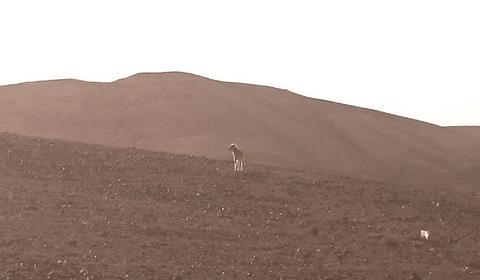
Three days later, as I crawled from my tent into the half-light of dawn, I saw a flash of grey-brown. It was gone in a matter of seconds, but I stood there, paralysed, for what felt like an age. A lone wolf (pictured, bottom left). It was both frightening and beautiful, bounding across the valley and gliding over the rocks with untameable elegance. Whatever it was running from, or after, it was all-consumed by the chase.
As the day tracked on, the thought seemed to prowl around my mind: was it really a wolf? As I scoffed down a fistful of raisins, I did something I should never have done: I googled it.
Israel is obsessively well-connected and, even in the remotest desert ravines where water is impossible to come by, there’s usually a flicker of signal. I was quickly reassured that, yes, there are wolves in the Negev. Good to know.
For the next few nights, I didn’t sleep very well. It’s a strange feeling, drifting off in the wilderness while paws are potentially prowling around outside the tent. I anxiously chased off another wolf in broad daylight later in the trip but spent the rest of the day nervously looking over my shoulder to see if it was following me. I later met an Israeli rescue worker in the town of Arad who laughed when I told him about my encounters with wild beasts. He said something which roughly translated as: “Wolves? Ha! Don’t be a wimp. They won’t hurt you.”
In turns out that the Arabian wolf is one of the smallest of the canis lupus family and wouldn’t attack a full-grown adult – but it would have been a very different story with a flock of sheep. Or a child. There has been an unprecedented rise in wolf attacks on children in Israel. There are some lines in the Christmas story that I will never read the same way again. When Jesus was born in Bethlehem, there were shepherds out in fields nearby: “keeping watch over their flocks at night” (Luke 2:8). Now I know why.
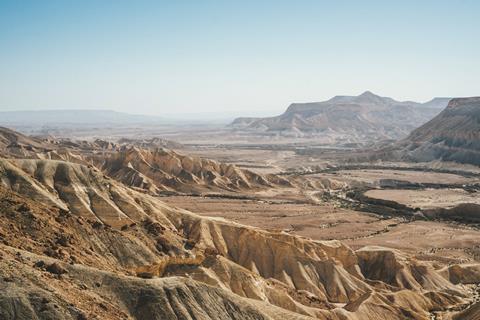
When Jesus was alone in the Judean wilderness, Mark records that he was: “with the wild animals” (Mark 1:13). No kidding.
The day after I chased off that wolf, I met a young Bedouin shepherd in a narrow ravine. I wondered how much sleep he’d had the night before. When Jesus taught his followers that he is the gate (John 10:7) he used the image of a shepherd lying in the gateway to a stone-walled pen, so that wolves would have to cross him to get to the flock. A “hired hand” (v12) would abandon the flock in a wolf attack, but the good shepherd would literally “[lay] down his life for the sheep” (v11). Jesus spoke metaphorically; we are not actually sheep (although the parallels are uncanny), but not long after this teaching, he really did lay down his life for his flock on a hill outside Jerusalem.
As a refugee child on a journey, Jesus would have relied on the kindness of strangers. Did the man who demonstrated such wild generosity catch a glimpse of it as a child?
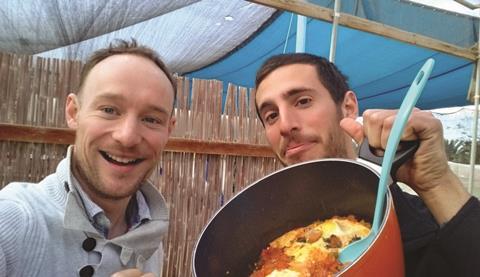
“I am the good shepherd”, Jesus said. “The good shepherd lays down his life for the sheep” (John v11). I guess he really meant it. I thought back to his early years, far from Jerusalem, when he would have hiked these dirt tracks as a young boy with dusty feet, leaving child-sized footprints in the shifting sands of the desert. Did he bathe his blistered feet in the sea he created? Now there’s a paradox. And how did he survive the wolves? If a wolf would attack a child in the 21st Century, would it not go for one in the first Century? I hardly think they’ve become more civilised over time.
What was it like for Joseph and Mary, bringing their toddler home from Egypt through many a wilderness mile? Did they lie awake under the stars, taking it in turns to defend their child through the early hours? Did they stoke the fire all night to keep the wolf from…well, there was no door. Perhaps Jesus was sandwiched between them for warmth and safety, much like a young child sneaks into their parents’ bed at night. Probably all of the above. But for all the challenges of life in the desert, there was one enormous blessing that was as true then as it is now.
THE JESUS WAY
A wide range of people living in the outposts of the Negev, known locally as ‘angels’, offer to host weary travellers for a night, providing a shower and a hearty meal for the restless wanderer.
I remember my first night as a guest. I rolled into the small pepper growing village of Paran in the heart of the desert. Noam, my host, willingly surrendered his room – I couldn’t stop him – while I had my first shower in five days and my first full night’s sleep since starting the expedition. It was heavenly.
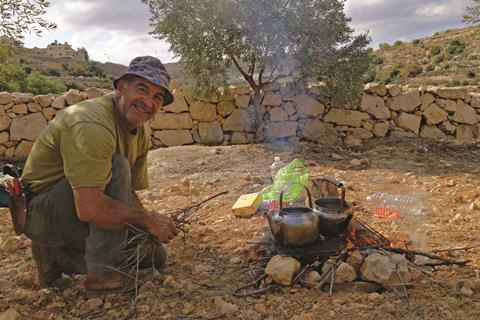
In the morning, he returned from his early shift on the farm to cook a magnificent shakshuka (a North African dish of tomatoes and eggs), complete with a host of local trimmings – salty sardines, sweet dates and fresh olives. This pattern was repeated over the coming weeks, time and again. I would stumble into a village after days in the wild – broken, exhausted and starving – and a trail angel would take me in, treat me like family and renew my strength for the path ahead.
Did he bathe his blistered feet in the sea he created?

As the trail wound north, I took a detour into the West Bank to visit a Palestinian family. There, I experienced the same warm embrace of trust and friendship. We drank fragrant Arabic coffee and laughed as their kids sang and danced their way around the living room. I visited an old friend in Bethlehem, Sami Awad, a Palestinian activist pioneering a ministry of peace and reconciliation. A few days later, I stayed at the Tent of Nations, a farm in the Judean hill country. Despite years of attacks on their land, the Nassar family still hold to their motto: “We refuse to be enemies.” When their fruit trees were burned to the ground, they simply forgave the attackers, replanted the trees and invited people to join in the harvest. They treat everyone they meet, even those on the offensive, with love and respect. When I asked Daoud, one of the farmers, how he found the strength to show such grace, he said: “It’s the Jesus way, we’re his witnesses.”
Stories like these rarely appear in the headlines, but it’s these stories that are unfolding all over the land right now. They are testimonies to the love and sacrifice of the peacemakers. I wonder if Jesus’ young family experienced the same grace that I encountered. I think perhaps they did. His teaching is littered with stories of precisely this sort of hospitality. There are frequent parables about banquets where the poor, the lame and the foreigner are invited in for a feast they could never repay. There’s the tale of a man who wakes his neighbour in the middle of the night to borrow bread for a visiting companion who has arrived unannounced (Luke 5:5-8).
These stories are Jesus’ rallying cry to a new covenant; the cornerstones of compassion that define the culture he created. But I wonder whether the examples he chose were more than hypothetical. As a refugee child on a mammoth journey home from Egypt, he would have relied on the kindness of strangers to provide for him on the road. Did the man who demonstrated such wild generosity as an adult catch a glimpse of it as a child?
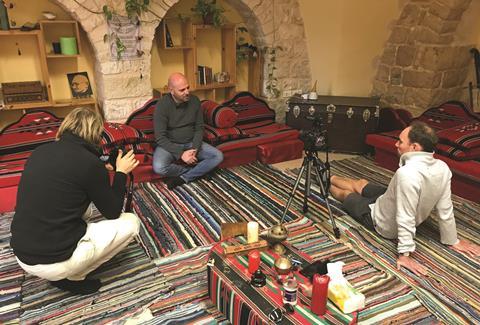
For Jesus, showing unconditional love to strangers was standard procedure, even to those sent to kill him. When the time came for him to lay down his life, he showed mercy even to those employed in his execution, healing the soldier in the garden whom Peter had sliced with a sword, reassuring the rebel who was crucified next to him, even forgiving the very killers who drove nails into his wrists as he carried the weight of the world on his shoulders.
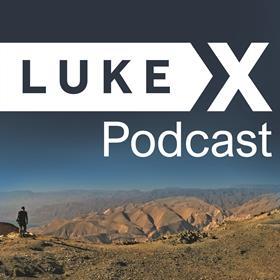
Ultimately, of course, he had the last laugh and, by rising from the grave and conquering death, he commissioned a new world order. Jesus invites us into the same culture of compassion that he started. In his own eternal words: “Whatever you did for one of the least of these brothers and sisters of mine, you did for me” (Matthew 25:40). Who could you be an angel to this Christmas?
You can read more about this expedition in Finding the Peacemakers (Hodder & Stoughton), featuring encounters with heroes of faith all over the world, from Chilean miners and Syrian refugees to former English football hooligans.
To hear interviews from the adventure, check out the LukeX Podcast, or visit lukex.org for films from the desert road






















![Jesus-myths-01-[Recovered]](https://d17xjl6rg4e8ic.cloudfront.net/Pictures/100x67/6/3/7/45637_jesusmyths01recovered_933246.jpg)














